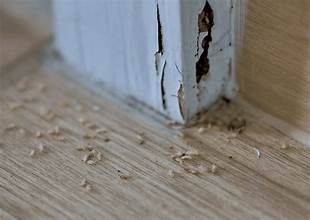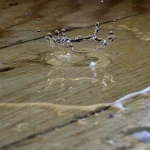Introduction
Most pests don’t announce their arrival. They slip in quietly, build nests behind walls, and multiply before the first real sign of trouble. By the time you’re spotting live bugs or hearing noises at night, the infestation may already be well underway.
What makes pest detection so tricky is that symptoms can be subtle. A few crumbs missing from the counter. A faint scratching sound in the ceiling. Even odd smells can indicate unwanted visitors. Knowing what to look for—and acting fast—can make the difference between a simple fix and a full-scale extermination.
While regular pest control services are essential for long-term prevention, many infestations begin when warning signs go unnoticed. This guide breaks down the most common indicators that pests are sharing your space and what steps to take before the situation worsens.
1. Unusual Sounds, Especially at Night
If you’re hearing unexplained noises—particularly after dark—pay attention. Many pests are nocturnal, choosing the quiet of night to move about freely.
Sounds to Listen For:
- Scratching or gnawing in walls, ceilings, or under floors
- Scurrying or fluttering in attic spaces or ductwork
- Rustling in kitchen pantries or behind appliances
These sounds are most often caused by rodents, such as mice and rats, but may also signal birds nesting in vents or bats in attic spaces.
Action Step:
Investigate the source with a flashlight or camera if accessible. Avoid sealing off any areas until the pest is identified to prevent trapping it inside your home.
2. Droppings and Grease Marks
Pest droppings are one of the clearest indicators of an active problem. These often appear along baseboards, under sinks, or in storage areas.
What to Watch For:
- Rodent droppings: Small, pellet-shaped, typically dark brown or black
- Cockroach droppings: Tiny, pepper-like flecks in corners or appliance backs
- Grease trails: Smudges or streaks along walls or around openings, left by rodents following the same path repeatedly
These clues are not only signs of presence but also of frequency. The more consistent the marks, the more established the infestation.
Action Step:
Clean up what you find while wearing gloves and a mask. Sanitize the area thoroughly, then place traps or monitoring stations to confirm continued activity.
3. Gnaw Marks, Holes, and Chewed Materials
Rodents and insects don’t just invade—they chew. From food packaging to insulation, pests use their teeth and mandibles to access what they need.
Evidence of Damage:
- Small gnaw holes in dry food boxes, soap bars, or electrical wires
- Shredded materials such as paper, fabric, or plastic (often used for nesting)
- Damaged baseboards or drywall from scratching or burrowing
Even minor damage can become serious if electrical wiring or structural materials are affected.
Action Step:
Secure all food in hard plastic or metal containers. Identify entry points where pests may be entering and begin sealing off accessible routes.
4. Bad Odors You Can’t Explain
Infestations often come with distinctive smells. These odors can result from urine, droppings, or the pests themselves.
Common Scents:
- Ammonia-like odors (rodent urine)
- Musty or oily smells (cockroaches)
- Rotting or sour smells (decaying food or deceased pests)
Pests often live and die in hidden areas, and as their numbers increase, the scent becomes harder to ignore.
Action Step:
Track the odor to its source if possible. Clean and ventilate affected areas, and prepare for a deeper investigation if the smell persists or intensifies.
5. Damaged Plants or Lawns
Outdoor spaces can show early signs of an infestation before pests make their way inside. Holes in leaves, disturbed soil, or damaged turf may point to more than just common garden issues.
Outdoor Warning Signs:
- Tunnels in the lawn (moles or voles)
- Chewed foliage or roots (insects, beetles, or rodents)
- Ant hills or wasp nests around the perimeter of the building
These pests may be in the early stages of migration indoors, especially as seasons change.
Action Step:
Trim overgrown vegetation and remove yard debris that offers shelter. Monitor the transition between lawn and foundation—this is a common route for many pests.
6. Increased Pet Activity in Specific Areas
Pets often detect pests before humans do. If your dog or cat is fixated on a particular spot—like a wall, closet, or under the fridge—it could mean something is moving inside.
Clues from Pets:
- Barking or growling at walls or floorboards
- Pawing or digging at baseboards or cabinetry
- Increased anxiety or repeated trips to the same location
While not always a sure sign, consistent behavior like this can hint at movement or sounds humans don’t detect.
Action Step:
Inspect the area for visual or audible evidence. Consider placing motion-triggered cameras or using pest monitors in the suspected zone.
7. Sightings of Live or Dead Insects
One of the clearest signs you have a problem? Seeing pests themselves. Even a single cockroach, ant trail, or silverfish could indicate a larger population nearby.
When Sightings Matter:
- Daytime sightings: Pests like cockroaches are nocturnal; seeing them during the day can mean a large infestation.
- Multiple of the same type: A repeated pattern suggests breeding or an active colony.
- Dead insects in corners or windowsills: May indicate pest entry points or dying populations nearby.
Action Step:
Photograph what you find and research species for proper identification. Early identification helps determine the right extermination method or treatment path.
Even if you only spot one pest, don’t ignore it—many pests are masters of concealment, and one visible insect could mean dozens more in hiding.
Conclusion
Pest problems often begin quietly. Subtle signs—odors, sounds, droppings, or property damage—can point to bigger issues waiting to surface. Knowing what to look for is the first step in preventing infestations that require intensive extermination.
King Pest Solutions encourages homeowners and property managers to stay alert. From the attic to the baseboards, paying attention to small changes in your space can reveal pest presence early enough to act. Regular pest control inspections combined with a watchful eye can make all the difference in maintaining a clean and safe property.
When something feels off, don’t wait. Your best line of defense starts with observation—and ends with decisive action.







